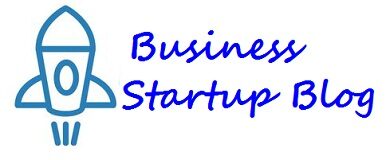
Of course, we all might have experienced this while shopping in a retail store. We visit a store to buy any item and when we see a price on a label on the shelf, there may be something that may catch our attention. It is none other than the pricing of the item itself. Along with other factors, the pricing of a product is a factor that can make you feel urgency to purchase a particular item.
Whether it looks like a perfect deal, a special offer for a limited time, or even a selection of numbers ( like seeing an item priced at $5.99 rather than $6.05), retailers use the psychology of human beings to enhance their pricing strategies in different ways. If there is a better pricing strategy, it can often lead to larger sales while enjoying more effective retail operations. Using custom price tags or other techniques, you can attract your customers to a great extent. By changing some simple details in the way you give pricing to your merchandise, you can change the way people see the value of your product. This way, you can encourage people to buy more products from you. Of course, not! There is no need to change anything else about your business or products.
It has become more important and effective for small retail business owners to take a closer look at the pricing of merchandise to get bigger sales. You should understand how you can maximize your profitability just by taking care of the psychology of pricing in the retail market.
Charm Pricing
The technique of ‘Charm Pricing’ is one of the major things you need to understand. This tactic includes deciding the prices of items or products in a way providing consumers the impression that they are receiving a slightly better deal. Let’s take a glance, retail stores often use the classic technique of pricing products with numbers. This technique lets you use numbers that end with .99 or .95. But when stores use the round numbers technique to price an item, of course, it can be a good tactic to assist customers ‘process’ the price more ‘confidently’ in their minds.
But this round numbered pricing strategy relies on what kind of item you sell. If customers purchase items according to emotional factors (sentimental items, comfort foods), then this technique is likely to work better. The price of $100 for an item is suitable for a customer, he/she feels right. However, if customers depend on rational decisions to buy any item, then adding the details of the cents at the end like $99.99 can work for your business.
Reframing the price
Understand the thing: customers do not see your prices on their own merits. They consider how your price is related to others (competitors) after seeing custom price tags. Let’s see, consumers generally know the difference between a high price and a low price. From this, it should be understood that your price must be competitive. It does not mean you need to offer the lowest price. All you need to do is to present your price in a way that makes it ‘feel’ or ‘look’ lower.
Now, what is the right way to do this? There are many ways, but one way is to partition pricing and divide the total price of your product into a few different elements. A customer is likely to link your product’ base price with the total price, no matter if your total price is greater. Let’s take a glance, if you mention shipping and handling prices along with the item’s price, it is likely to see that the price is greater than its actual price. This is why it is important to list your shipping and handling costs individually.
Another method to reframe your price is to mention the equivalent price of an item in terms of smaller and ongoing costs. Like, how much it would cost you ‘per day’ or ‘per month.’ This way, customers think the price will be lower or better, making them purchase more.
Positioning of the price
Last but not the least, when you are going to add custom price tags to your product, it is important to position it in the right manner so that it can look smaller. Prices are also impacted by things like font size and the location of the pricing. If prices are displayed on the left, consumers perceive them as smaller ones. Using a smaller font size can give you a chance to price your product smaller than they are. Removing commas is also a tricky thing you can add to price tags.
This is how pricing can be affected by many factors. When you do not have any idea to adopt an effective pricing strategy, have a word with EnvironPrint, a team of professionals to design price tags.

